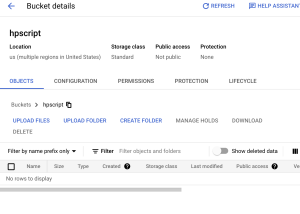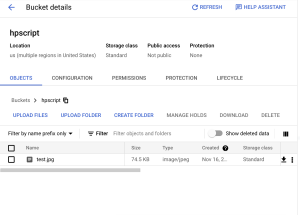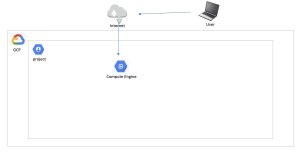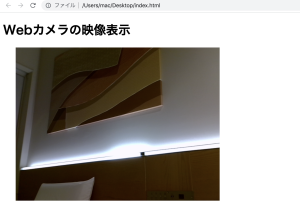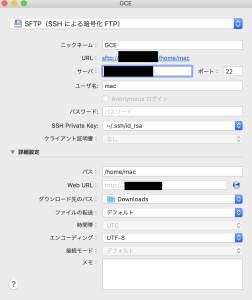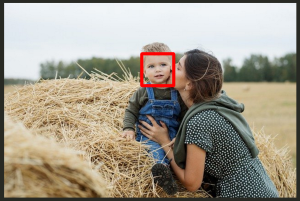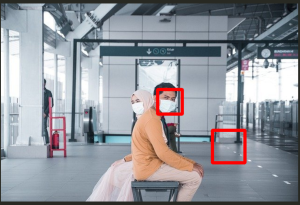1. まずgetパラメータでpageの値を取得する
string型での取得
var page int
var s string=c.Params.Get("page")
page, _ = strconv.Atoi(s)
fmt.Println(page)
http://192.168.34.10:9000/paging?page=1
-> 1
2. ページのスタートと終わりの値を計算
例えば、1ページ5つの値のみを表示するとする場合、l(limit)=5として、startとendの値を求めます。
var l int = 5
var start, end int
start = (p - 1) * l
end = start + l
fmt.Println(start)
fmt.Println(end)
http://192.168.34.10:9000/paging?page=2
2 // 2ページ目
5 // start
10 // end
3. 配列からスライス(要素を取り出す)
text := [15][2]string{
{"1","content"},
{"2","content"},
{"3","content"},
{"4","content"},
{"5","content"},
{"6","content"},
{"7","content"},
{"8","content"},
{"9","content"},
{"10","content"},
{"11","content"},
{"12","content"},
{"13","content"},
{"14","content"},
{"15","content"},
}
fmt.Println(text[start:end])
http://192.168.34.10:9000/paging?page=2
-> [[6 content] [7 content] [8 content] [9 content] [10 content]]
4.全部をつなげて、templeteに出力
func (c App) Paging() revel.Result {
var p int
var s string=c.Params.Get("page")
p, _ = strconv.Atoi(s)
fmt.Println(p)
var l int = 5
var start, end int
start = (p - 1) * l
end = start + l
fmt.Println(start)
fmt.Println(end)
text := [15][2]string{
{"1","content"},
{"2","content"},
{"3","content"},
{"4","content"},
{"5","content"},
{"6","content"},
{"7","content"},
{"8","content"},
{"9","content"},
{"10","content"},
{"11","content"},
{"12","content"},
{"13","content"},
{"14","content"},
{"15","content"},
}
fmt.Println(text[start:end])
content := text[start:end]
return c.Render(content)
}
html側
<h1>paging</h1>
<ul>
{{range .content}}
<li>{{ index . 0 }} {{.}}</li>
{{end}}
</ul>
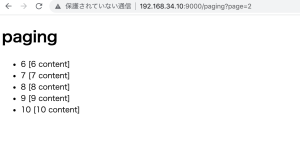
問題は、view側のページネーションのbuttonをどう実装するか…
0から作るの大変だな..
